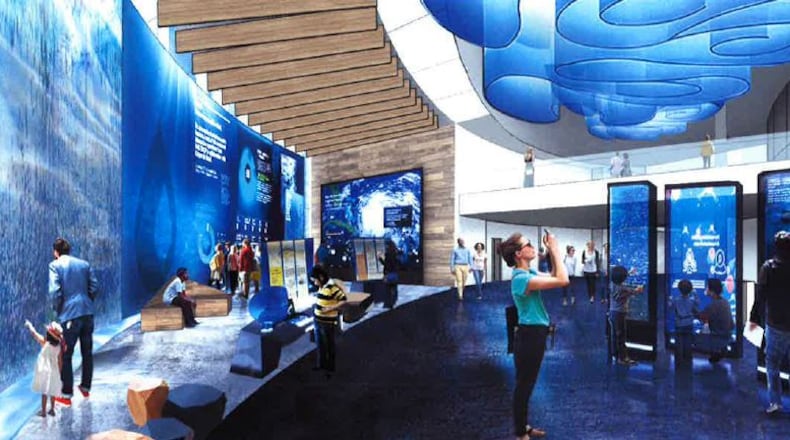When it comes to water, Gwinnett County has developed a sparkling reputation.
The F. Wayne Hill Water Resource Center is a state-of-the-art, globally known wastewater facility, treating tens of millions of gallons each day before pumping them back into Lake Lanier — the county and region's primary water source. A brief filed this summer in the U.S. Supreme Court specifically cited the conservation success at the Hill plant as a reason why Georgia should "win" its years-long "water wars" with Florida and Alabama.
Gov. Nathan Deal has called Gwinnett the state’s “standard” for water stewardship.
MORE: Photos: What Gwinnett's $30M 'water innovation center' could look like
MORE: Gwinnett approves much-debated 'farmmunity' development
County officials, though, want to do even more — so they’re planning to build a $30 million “water innovation center,” a centralized location for research and training and education. The goal is to become even more of a leader in the field by creating the type of facility that doesn’t exist anywhere else in the southeastern United States.
But why? Why does one metro Atlanta county feel the need to take on such a huge mission?
Gwinnett is the biggest user of Lake Lanier’s water, for one. But also because it’s important — and because somebody’s got to, Commission Chairman Charlotte Nash said this week.
“It may not be the thing that attracts attention like a new park or a new road,” said Boyd Austin, the mayor of the city of Dallas and former chairman of the Metropolitan North Georgia Water Planning District.“But it’s vital to our economy and our quality of life in the district. And it will pay dividends for decades. For the whole region.”
‘A world leader’
During a Tuesday morning briefing, representatives from architecture and engineering firm Jacobs presented Nash and her commission colleagues with their close-to-final vision for the innovation center.
“I really like what I see,” District 4 Commissioner John Heard said. And there was plenty to be impressed by.
The site is a short walk from the F. Wayne Hill plant, which is nestled on hundreds of otherwise empty acres between I-985 and I-85 near Buford. The design proposed for the 49,000-square-foot innovation center is heavy on stone and tinted glass with a circular entry point for the public.
It’s the work that will happen inside, though, that the county is touting.
Gwinnett already engages in water-related research and has partnerships with institutions like Georgia Tech and Johns Hopkins University. But officials envision taking those efforts to the next level.
They hope to hire folks with advanced degrees in water treatment, water reclamation and limnology (the study of lakes). The innovation center would include plenty of lab and research space, and the county has authorized the creation of multiple “scientist positions,” water department director Ron Seibenhener said.
“This is a visible symbol, I think, of our commitment to doing the best we can in terms of stewardship for the natural resources, but also to cultivate that talent that we need very much for future success in that area,” Nash said.
The commission chair and Seibenhener both said they’ve already heard from private companies interested in partnering with the center once it opens. Add all of that to the training possibilities for county employees and others, as well as a public education aspect, and you get the type of facility that currently only exists in a few other places in the country.
"We are thrilled to see Gwinnett County continue on their trajectory of being a world leader in municipal water technology, and are pleased that Lake Lanier benefits from some of that technology and investment," said Joanna Cloud, the executive director of the Lake Lanier Association, a nonprofit advocacy group.
“… We would like to see other municipalities follow their lead in terms of those types of investments and technology.”
A necessary investment?
Building the water innovation center is expected to cost somewhere in the neighborhood of $30 million.
That money would come straight from water department capital funds and not have to be borrowed, Nash said. While $30 million is no small amount, it would be merely a fraction of the department’s overall water and sewer budget, which is projected to be about $370 million in 2018.
The goal will be to complete construction on the center within the next two or three years, Seibenhener said.
“We made the investment in the Hill plant and the water resource center because it was necessary” due to Gwinnett’s rapidly growing population, Nash said. “But why should our community not benefit from the additional kinds of things that can come from that?”
About the Author
Keep Reading
The Latest
Featured





